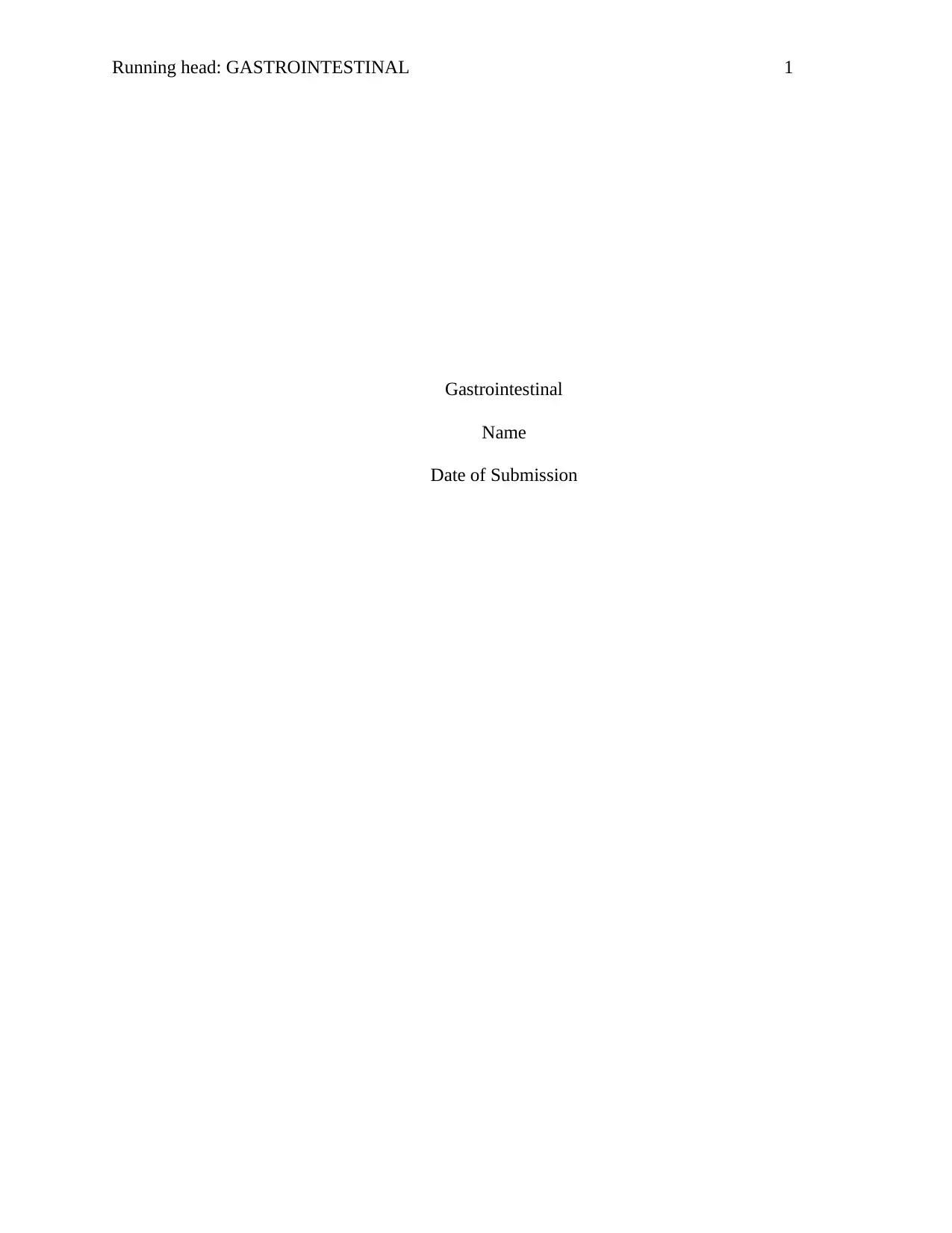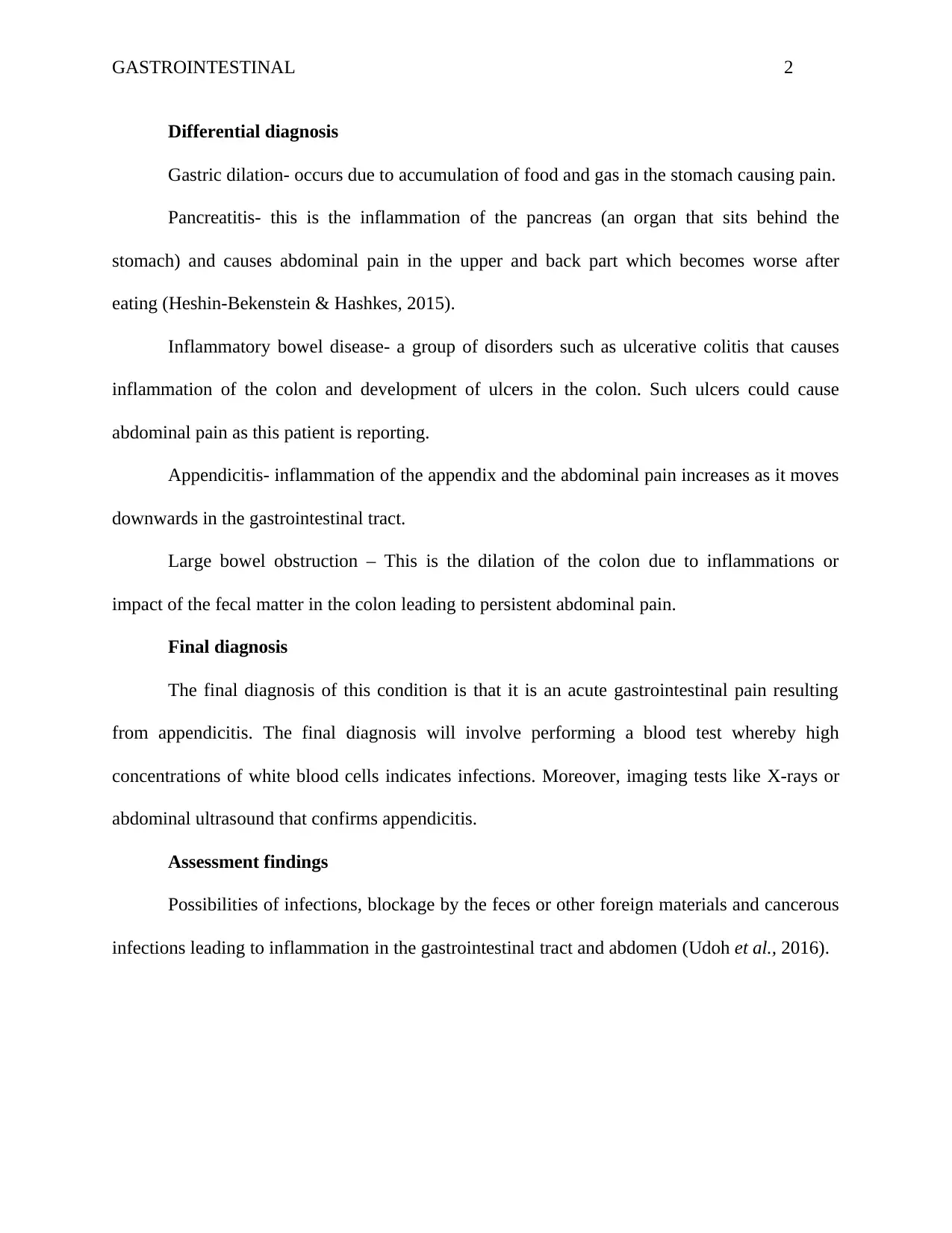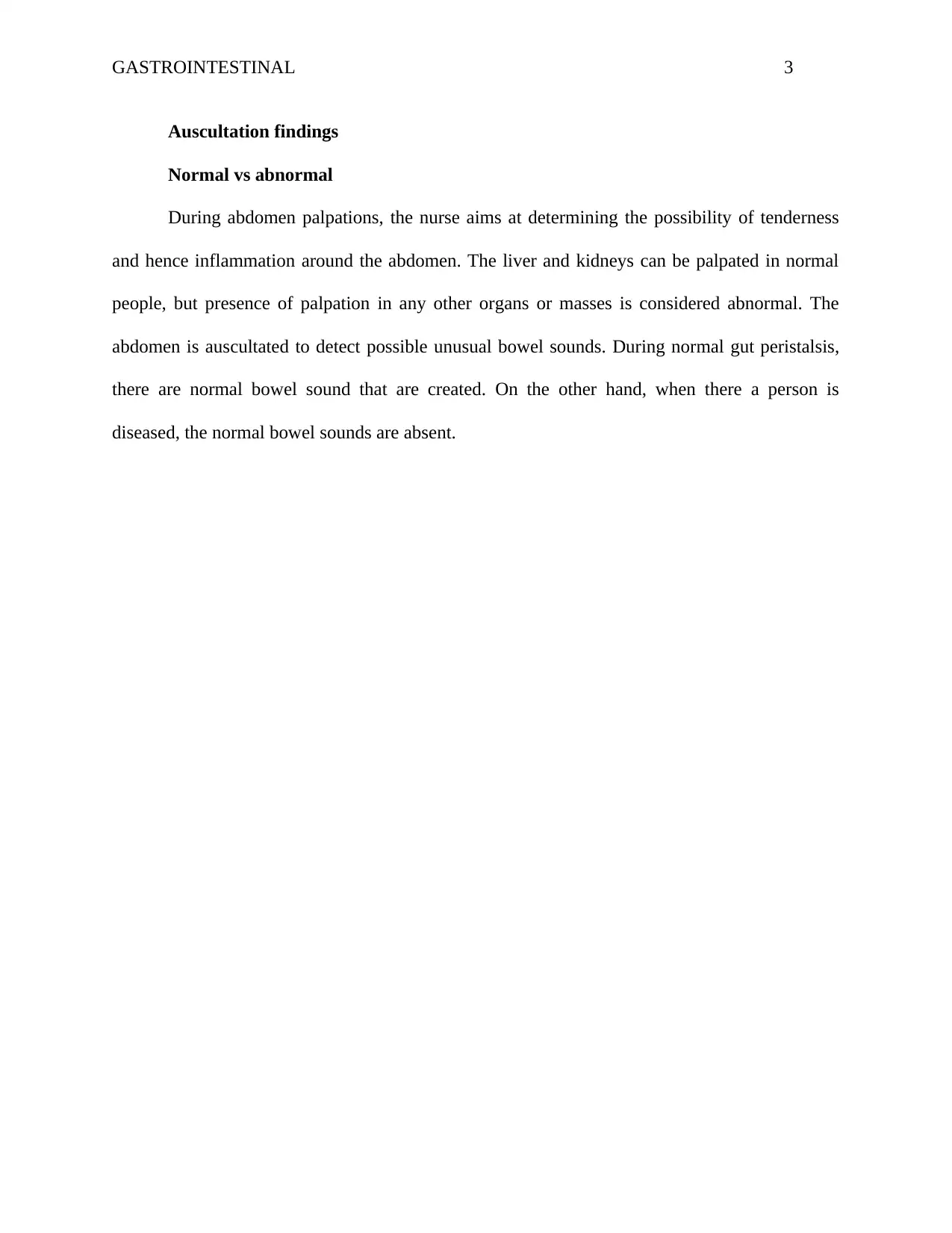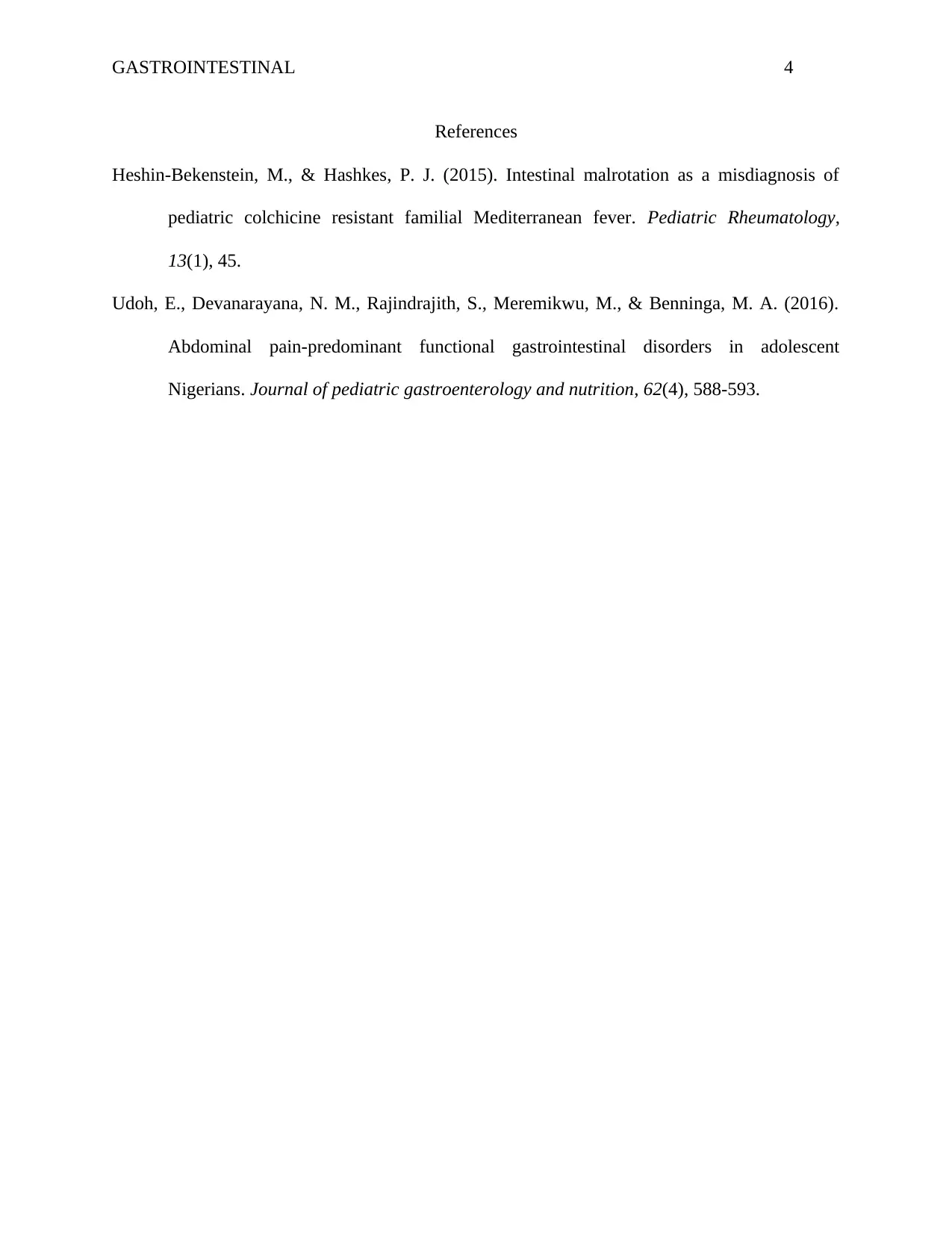Gastrointestinal pain: Diagnosis, assessment, and treatment report
VerifiedAdded on 2021/06/14
|4
|423
|115
Report
AI Summary
This report focuses on the diagnosis and assessment of gastrointestinal pain, exploring potential causes such as appendicitis, and other conditions like pancreatitis and inflammatory bowel disease. The report discusses the assessment findings, including the importance of auscultation and palpation in determining the presence of tenderness and inflammation. It differentiates between normal and abnormal findings, highlighting the significance of bowel sounds and the potential for infections, blockages, or cancerous infections within the gastrointestinal tract. The report also references relevant literature to support the findings and recommendations, providing a comprehensive overview of the topic.
1 out of 4






![[object Object]](/_next/static/media/star-bottom.7253800d.svg)